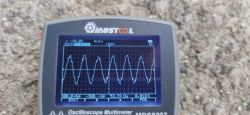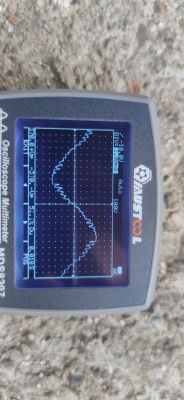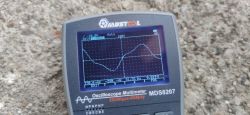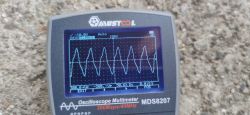Hello.
Recently interested in the topic of power quality, which is generated by portable power generators for every budget, I decided to propose that the one who has an aggregate and an oscilloscope at one time and place examined the output voltage waveform without and under load. It turns out, as it could have been foreseen, that most cheaper (and sometimes even more expensive) aggregates generate a terrible chaff instead of something that is similar to a sine wave about which every user with modern equipment that we attach to these aggregates would wish.
examined the output voltage waveform without and under load. It turns out, as it could have been foreseen, that most cheaper (and sometimes even more expensive) aggregates generate a terrible chaff instead of something that is similar to a sine wave about which every user with modern equipment that we attach to these aggregates would wish.
At the beginning I am tossing the link to the Stanley aggregate test https://www.elektroda.pl/rtvforum/topic2381701.html where the output oscillograms from this device are included. The second test that the same colleague did is here: https://www.elektroda.pl/rtvforum/topic2386367.html. It is worth watching what the waveforms look like, especially the second aggregate is quite popular.
I suggest that you place such runs as much as possible and write what aggregate they come from at what load. I think it will help to dispel the doubts of many people who need to use an aggregate for sensitive equipment and they care about the best quality of energy and from the seller they are not able to get such information or have no way to test it.
I will start from myself. I have a popular old military aggregate Pab-2, whose combustion I once asked my colleagues in this thread: https://www.elektroda.pl/rtvforum/topic3272854.html.
Yesterday I measured this aggregate quickly with an old "non-digital" oscilloscope without load and under a load of 75% or about 1.5kW.
without load and under a load of 75% or about 1.5kW.
Here's what I saw:
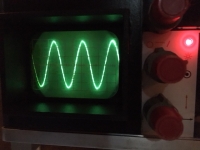 No load
No load
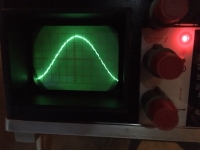 And close-up
And close-up 
And under load:
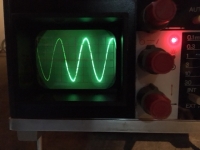
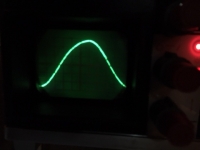 and close-up.
and close-up.
To my surprise, the quality of the generated electricity is very good and in fact I have never had a problem with any type of furnace, blower controller, fridge, pumps - anything in the power of the unit.
At the same time, I warn that measurements should be made by people with an idea what they are doing because measurements should be made either with a special high voltage differential probe or a suitable probe for a voltage above 300 V with a silencer, and remember that one of the probe leads, i.e. the crocodile clip, is connected to ground and oscilloscope casing which may cause a potential short circuit or electric shock - so remember to make measurements only when you are sure what you are doing !!! or ask someone who has this knowledge.
I invite you to paste photos and discussions. Greetings
Recently interested in the topic of power quality, which is generated by portable power generators for every budget, I decided to propose that the one who has an aggregate and an oscilloscope at one time and place
At the beginning I am tossing the link to the Stanley aggregate test https://www.elektroda.pl/rtvforum/topic2381701.html where the output oscillograms from this device are included. The second test that the same colleague did is here: https://www.elektroda.pl/rtvforum/topic2386367.html. It is worth watching what the waveforms look like, especially the second aggregate is quite popular.
I suggest that you place such runs as much as possible and write what aggregate they come from at what load. I think it will help to dispel the doubts of many people who need to use an aggregate for sensitive equipment and they care about the best quality of energy and from the seller they are not able to get such information or have no way to test it.
I will start from myself. I have a popular old military aggregate Pab-2, whose combustion I once asked my colleagues in this thread: https://www.elektroda.pl/rtvforum/topic3272854.html.
Yesterday I measured this aggregate quickly with an old "non-digital" oscilloscope
Here's what I saw:
 No load
No load  And close-up
And close-up And under load:

 and close-up.
and close-up. To my surprise, the quality of the generated electricity is very good and in fact I have never had a problem with any type of furnace, blower controller, fridge, pumps - anything in the power of the unit.
At the same time, I warn that measurements should be made by people with an idea what they are doing because measurements should be made either with a special high voltage differential probe or a suitable probe for a voltage above 300 V with a silencer, and remember that one of the probe leads, i.e. the crocodile clip, is connected to ground and oscilloscope casing which may cause a potential short circuit or electric shock - so remember to make measurements only when you are sure what you are doing !!! or ask someone who has this knowledge.
I invite you to paste photos and discussions. Greetings






